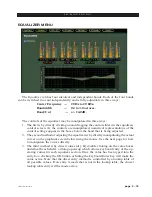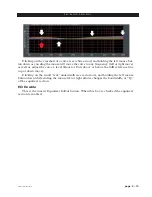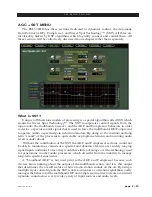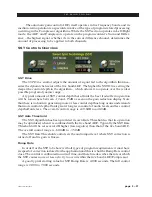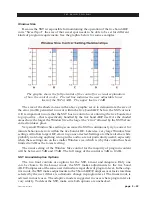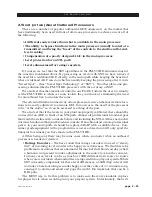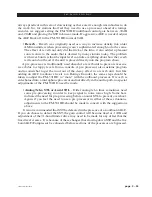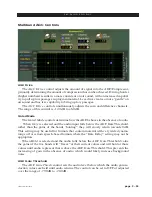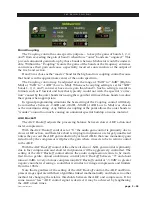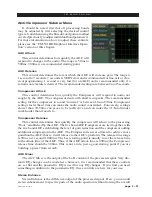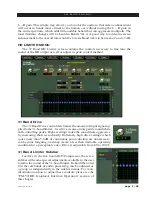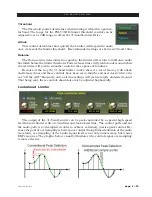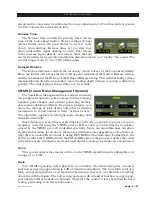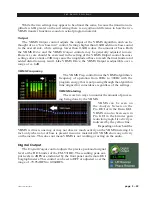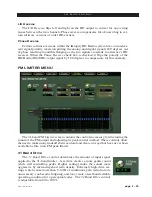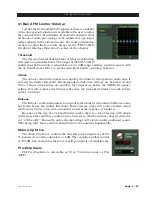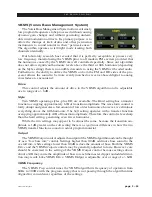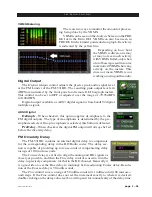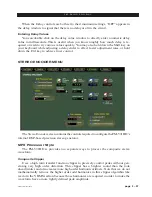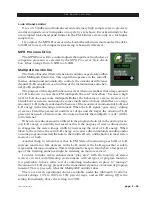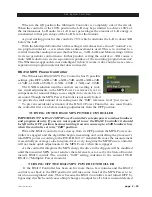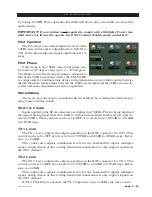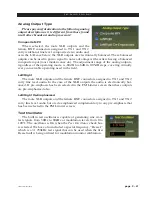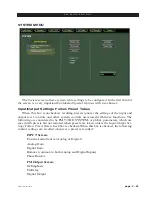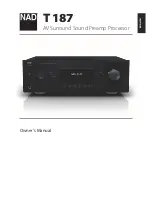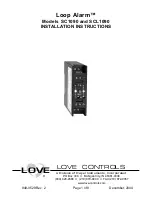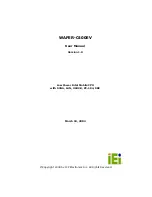
page 3 – 31
FM-531HD / May 2013
F M - 5 3 1 H D P R O G U I
circuit and its value must be subtracted from any adjustment of 0.5 milliseconds or greater
in order to know the actual attack time.
Release Time
The Release Time controls the primary (fast) release
time of the look ahead limiter. Slower settings (longer
release times) cause the peak limiter to recover more
slowly from limiting. Release times set too slow may
allow undesirable signal ducking to occur. Fast release
times increase signal density, and release times that are
too fast result in increased intermodulation distortion which can “muddy” the sound. The
control ranges from 33.0 to 330.0 milliseconds
Delayed Release
The Delayed Release controls the secondary (slow) release of the look ahead limiter.
Here, the limiter will release the first 3dB of gain reduction at the (faster) Release setting,
and the remainder of the Release at the Delayed Release timing. This will drastically reduce
intermodulation distortion and allow more limiting depth without incurring a distortion
penalty. The control ranges from 100ms to 1.0 seconds.
VBMS (Vorsis Bass Management System)
The Vorsis Bass Management System allows extremely
low program frequencies to be processed without causing
dynamic gain changes and without generating undesir‑
able intermodulation artifacts. Its primary purpose is to
allow the thumps of kick drums and other percussion
instruments to sound natural in their “percussiveness.”
The algorithm operates in left/right mode treating both
channels identically.
Our laboratory research has revealed that it is perfectly acceptable to process very low
frequency material using the VBMS prior to HD exciters provided that the harmonics
caused by the VBMS are well controlled spectrally. Since our algorithm does not allow
significant harmonic levels above the third or fifth harmonic (depending on the Style set
‑
ting) there is no audible downside to using the VBMS with coded audio. Furthermore, the
ability to utilize the VBMS on
both the FM and HD sides of the processor allows the sound
to be more evenly matched as receiver‑based digital to analog crossfades are encountered.
Drive
This control adjusts the amount of drive to the VBMS algorithm and is adjustable over
a range of +/‑ 6dB.
Style
Two VBMS operating styles, plus Off, are available. The
Hard setting has a transfer
function occupying approximately 1dB of transition amplitude. The waveform control is
fairly abrupt and generates a fair amount of harmonics; however, we eliminate everything
above the fifth harmonic. The
Soft setting operates with a transfer function occupying ap‑
proximately 2dB of transition amplitude. Therefore the control is less sharp than the hard
setting, generating even fewer harmonics.
Summary of Contents for FM-531 HD
Page 2: ...Technical Manual Wheatstone Corporation May 2013 FM HD Digital Audio Processor FM 531hd...
Page 122: ...page A 2 FM 531HD May 2013 A P P E N D I C E S Appendix A General Specifications A 3 Contents...
Page 128: ...page A 8 FM 531HD May 2013 A P P E N D I C E S Appendix B FM 531HD GPI Interface A 9 Contents...


